Char siu pork noodle soup is a hearty bowl of fresh wide rice noodles served in a flavorful homemade broth topped with tender juicy char siu pork and vegetables. Growing up, I’d eat this with my dad quite often so it is naturally a childhood favorite of mine. I always seem to crave this comforting bowl of noodle soup when I’m feeling homesick. In my opinion, noodles are food for the soul so I hope this recipe brings you comfort, warmth, and joy – just like it did for me!

What you’ll love about this recipe
If you’re looking for comfort in a bowl, you’ve come to the right place! The dish starts with char siu, which is usually a labor of love but, I’ve drastically simplified the process in this recipe. It begins with a super flavorful marinade made with Chinese cooking staples which is used to marinate pork shoulder or pork butt. After a 12-hour marinade, the char siu is air fried and basted with a honey glaze for the most juicy, delicious, and easiest homemade char siu. Char siu is usually roasted in the oven and requires attention throughout the cooking process so using an air fryer for the char siu is a game changer.
Once the pork is ready, everything else comes together quite fast. The soup is made with chicken stock, aromatics like ginger and scallion, and simple seasonings like salt, white pepper, and sesame oil. Since I’m using store-bought chicken stock, the soup comes together in just 5 minutes! This soup can be made in advance and even stored in the freezer for quick and easy meals.
Now for the noodles, I prefer fresh wide rice noodles (also known as ho fun) which are usually sold at my local Chinese market. These are the same noodles used to make beef chow fun and pad see ew. Fresh rice noodles have a bouncy and slightly chewy texture so I highly recommend using them! If you can’t find rice noodles, any type of noodles would work!
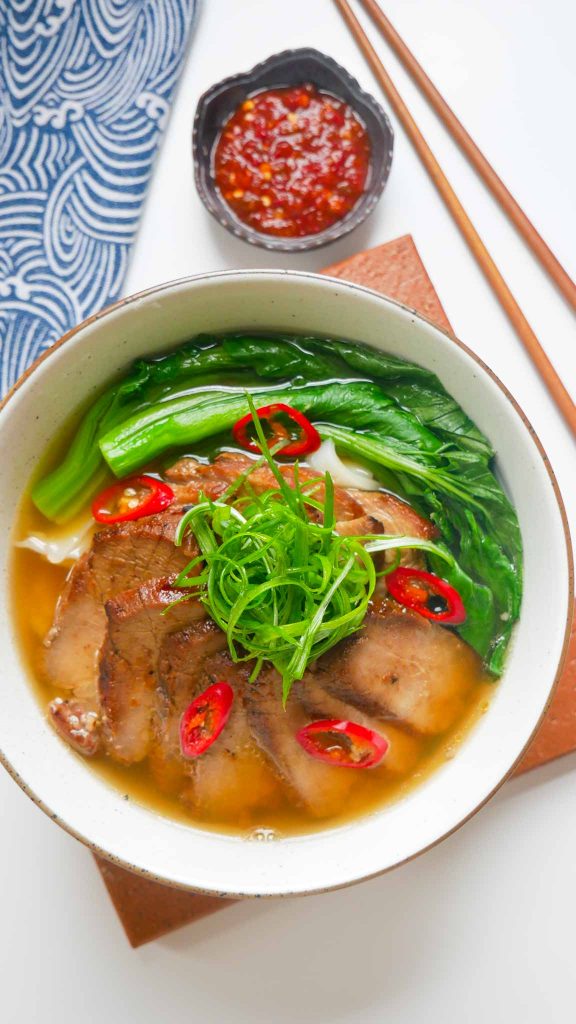
Char Siu Pork Noodle Soup Ingredients & Substitutions

Fresh wide rice noodles: Also known as ho fun, these flat, wide noodles made with rice flour are a common ingredient used in Cantonese cuisine. They’re usually sold fresh or refrigerated but not dried, because rice flour doesn’t hold up well to drying. Feel free to substitute this with udon, ramen, egg noodles, or your choice of noodles.
Yu choy: Adds a touch of freshness. You can substitute this with bok choy, Chinese cabbage, water spinach, or your choice of vegetables.
Sliced peppers: For garnish and spice. This is optional
Scallions: For garnish
Soup Ingredients & Substitutions
Chicken stock: I used store-bought chicken stock as the main base of the soup to help save time. I highly recommend using the brand New Choice, which can be found at your local Chinese market. This brand tastes cleaner and more flavorful than American brands. Aside from chicken stock, you can also use any type of stock you prefer.
Water: To prepare the soup
Ginger: Adds a spicy, earthy flavor.
Scallions: Adds a slight oniony flavor and aroma to the soup
Sesame oil: Adds a nutty flavor and glossy finish
White pepper: For seasoning and spice
Neutral oil: Used for sauteing the aromatics. I usually prefer to use avocado oil but feel free to use any neutral-tasting oil such as grapeseed, corn, canola, sunflower seed, or vegetable oil.
Char Siu Ingredients & Substitutions
Pork shoulder: Also known as pork butt, this cut of pork is most commonly used for char siu because it has an optimal meat-to-fat ratio. The fat marbling in this cut results in a juicy and flavorful char siu.
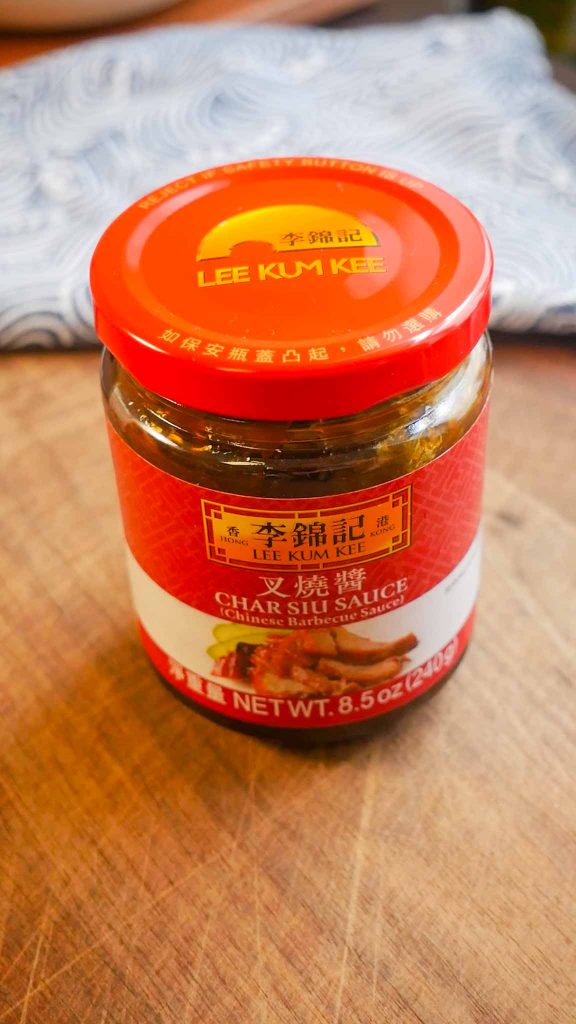

Lee Kum Kee Char Siu Sauce: This sauce is a ready-made marinade for char siu pork and has the essential flavors you’d expect in char siu. I like using this as a base and building flavors on top of it for the most delicious and authentic char siu. My dad, who is a Hong Kong native, gave me the seal of approval for this marinade so you know it’s legit!
Dark soy sauce: For a deep umami flavor and color. My favorite brand is Pearl River Bridge. This can be substituted with regular soy sauce.
Shaoxing wine: Helps to neutralize the smell of the part and imparts complexity to the sauce.
Honey: For some sweetness to balance out the savory flavors. I like using wildflower honey for its neutral taste.
Garlic cloves: For an extra layer of flavor. Feel free to add more but not less!
Chinese five spice powder: A spice blend that has the perfect balance of sweet, sour, salty, bitter, and savory. It adds essential warmth and aroma to the char siu.
White pepper powder: For added spice and seasoning


Fermented bean curd: A Chinese condiment made by fermenting firm tofu in salt, rice wine, sesame oil, and vinegar. A piece of this curd adds a pungent kick that’s salty and also rich in umami. It’s optional but highly recommended. It makes a difference to the overall flavor of the char siu pork but will still taste delicious without it.
Fermented bean curd brine: For added flavor
Honey Glaze Ingredients & Substitutions
Marinade: Reserve 2 tablespoons of the marinade above
Honey: For added sweetness and shine, and also helps to caramelize the char siu
Water: To thin out the glaze

How to Prepare Char Siu Pork Noodle Soup
Step 1: Prepare the char siu marinade
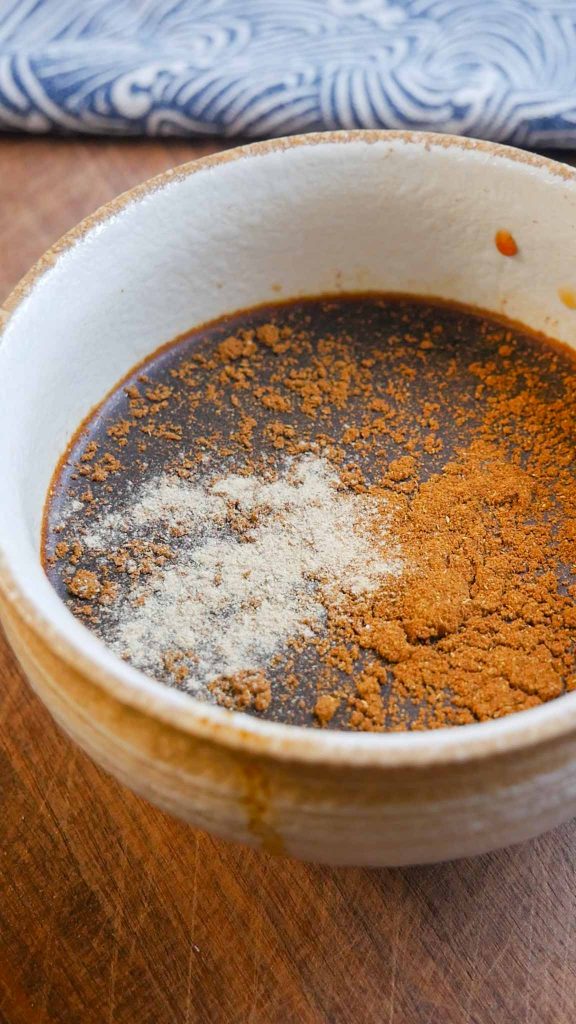



Start by preparing the char siu marinade. In a small mixing bowl, combine Lee Kum Kee char siu sauce, dark soy sauce, Shaoxing wine, honey, grated garlic, Chinese five spice powder, white pepper powder, fermented bean curd, and fermented bean curd brine.
Step 2: Break up the curd

Mix together well with a whisk, making sure to break up the fermented bean curd.
Step 3: Reserve some marinade

Reserve 2 tablespoons of the marinade to be used as a honey glaze. Set the rest of the marinade aside for later.
Step 4: Prepare the pork
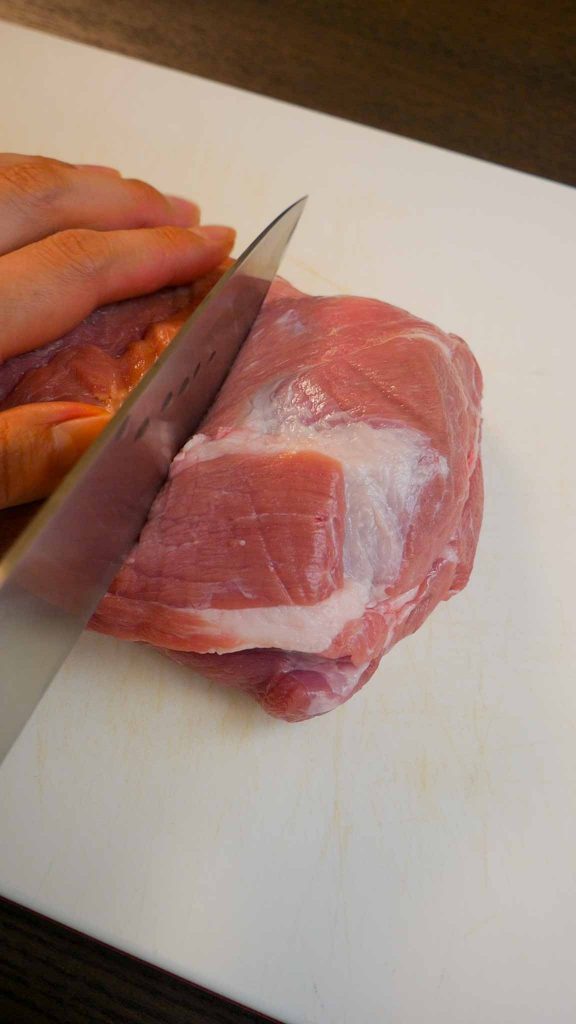


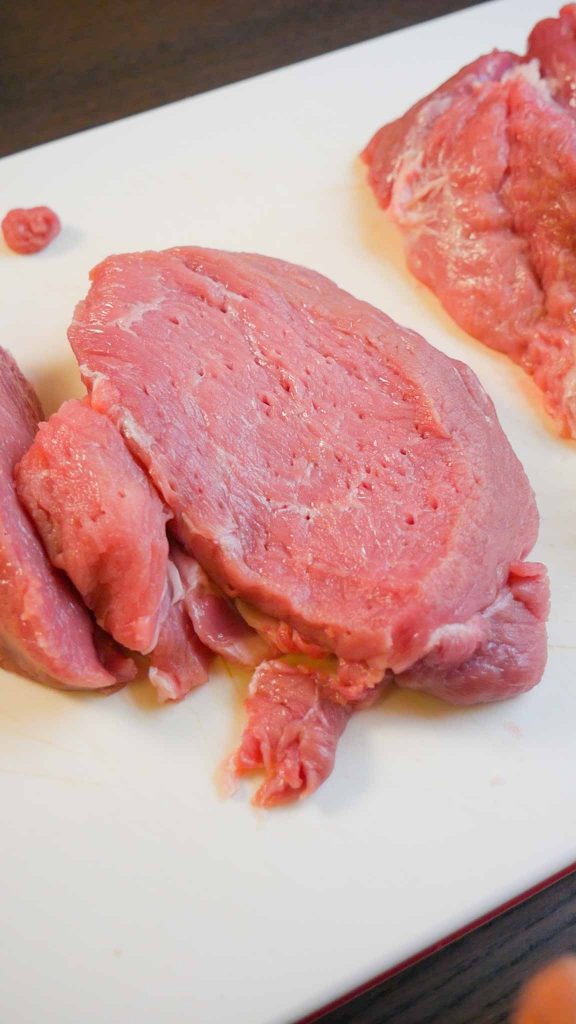
Prepare the pork by slicing them into 2-inch thick pieces. Using a fork, stab the pork on all sides. Transfer to a heavy-duty Ziploc bag then pour the marinade over the pork. Close the Ziploc bag, making sure it’s completely sealed.
Step 5: Marinate the pork


Massage the marinade into the pork then transfer to the fridge for at least 12 to 24 hours.
Step 6: Prepare the soup


To prepare the soup, heat a pot with neutral oil over medium heat. Once heated through, toss in the ginger slices and cook until fragrant, about 1 minute. Add the white part of the scallions then cook for an additional minute. Pour in the chicken stock and water, then bring to a boil.
Step 7: Taste and season the soup
Once boiling, add sesame oil and white pepper. Taste the soup to see if it’s to your liking. For example, if it’s bland, add a pinch of salt. If it’s too salty, add a splash of water. When you’re happy with the taste of the soup, turn it off and set it aside.
Step 8: Preheat the air fryer and prepare honey glaze

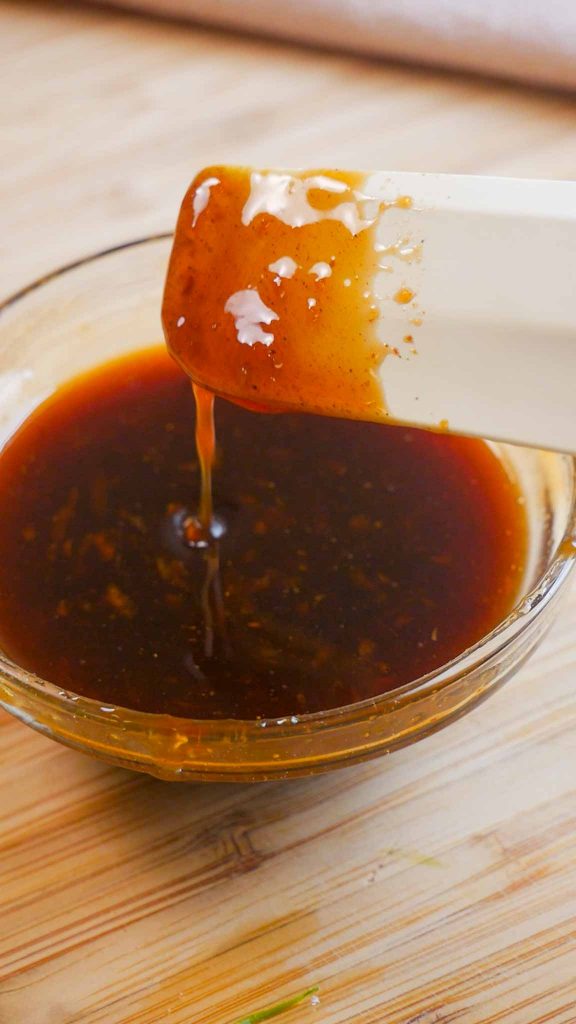
Preheat the air fryer to 400F (205C). While the air fryer is preheating, prepare the honey glaze. Take the reserved marinade and add honey and water. Mix until well combined.
Step 9: Load pork into the air fryer basket
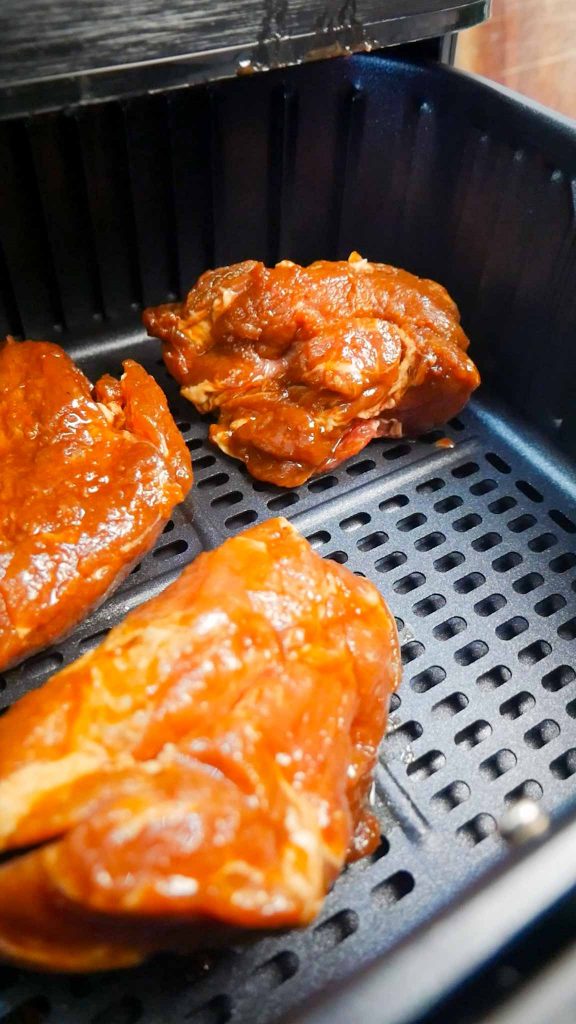
When the air fryer is ready to be used, arrange the marinated pork shoulder into the air fryer, making sure that there is enough space around each piece.
Step 10: Cook the pork





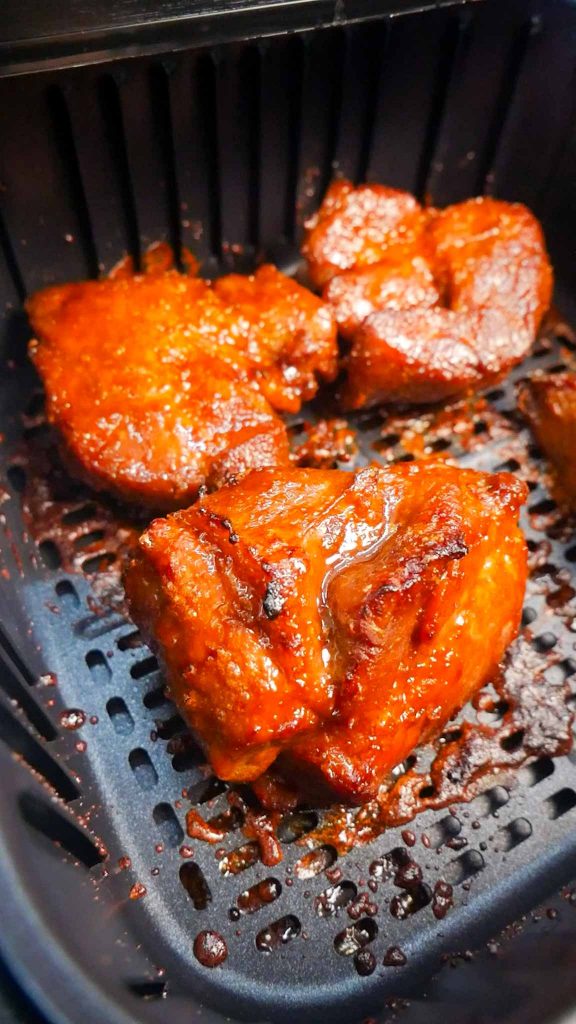
Air fry for 3 minutes, then baste with the honey glaze. Flip and baste the other side. Air fry for another 3 minutes. Repeat 2 more times. Cook for a total of about 12 to 14 minutes or until it reaches an internal temperature of 145F (63C). Depending on the thickness of your pork, you may need to cook it for another minute or so. I recommend using a meat thermometer to get an accurate temperature reading.
Step 11: Slice the char siu
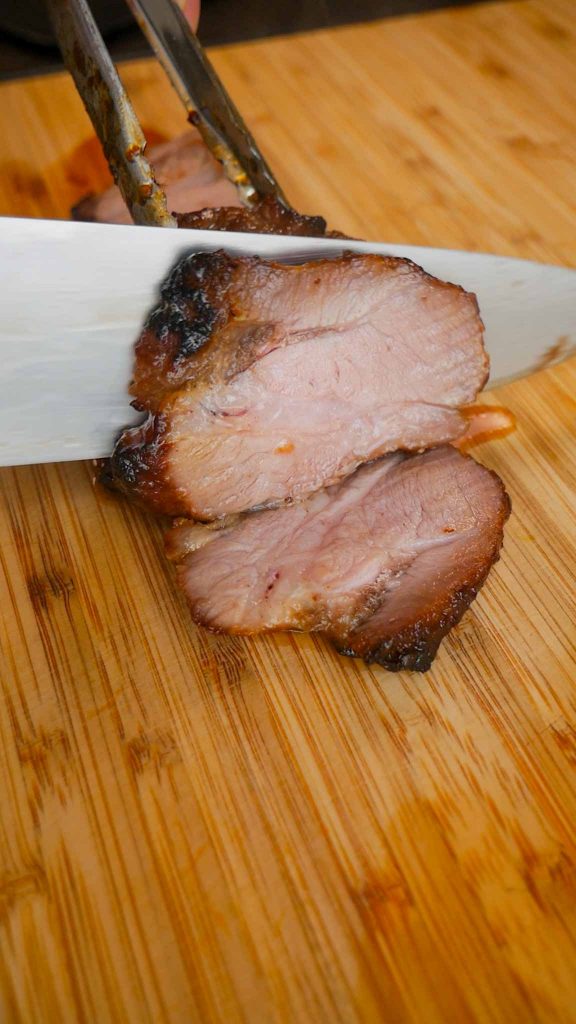



Remove the char siu from the air fryer and let it rest for 10 minutes before cutting. Slice into 1/4 inch thick pieces or your desired thickness.
Step 12: Cook the vegetables and noodles


Reheat the soup to a simmer. Next, prepare a pot of boiling water and set it over medium-high heat. Blanch the yu choy or your choice of vegetables for 1 to 2 minutes. Remove then set aside. Bring the same pot of water to a boil again then cook the wide rice noodles for 1 minute or until softened. If using dried noodles, follow the package instructions to prepare the noodles. Drain the noodles well.
Step 13: Assemble and serve



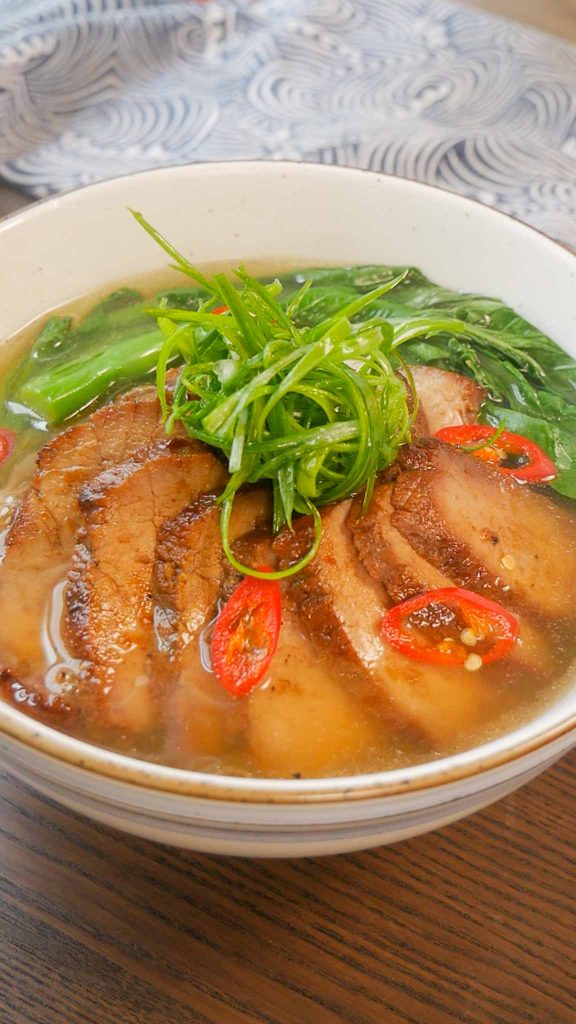
To assemble the noodle bowl, place one serving of noodles in a bowl. Top with yu choy and the sliced char siu. Garnish with sliced peppers and the green part of the scallions. Ladle the soup over the noodles. Serve and enjoy!
Preparation Tips for Char Siu Pork Noodle Soup
Here are some helpful tips for making the best char siu pork noodle soup at home every time!
- This recipe is also great if you have leftover char siu!
- To save time, you technically can just use the Lee Kum Kee char siu marinade however, it won’t taste as good. The additional ingredients added to the marinade truly make this the most authentic tasting char siu you will make at home.
- Pork is fully cooked once it reaches an internal temperature of 145F or 62C. I recommend using a meat thermometer to check the doneness without having to cut through the pork each time.
- Once the pork is fully cooked, allow it to rest on the cutting board for at least 10 minutes before slicing. This resting period allows for the juices to be redistributed back into the meat resulting in a juicy and moist char siu.
- Do not overcook the noodles. Both fresh and refrigerated noodles are already fully cooked. You only want them to loosen up, soften, and remain bouncy, but not become too soft and mushy.
- While fresh wide rice noodles are ideal for this recipe, you can essentially use any type of noodle you like! From egg noodles and udon to dried mung bean noodles and potato starch noodles, the possibilities are endless!
- Load your noodle soup with vegetables for added nutrients. For instance, you can add bean sprouts or bok choy for added crunch.

Frequently Asked Questions
How is char siu served?
Char siu or Chinese pork BBQ is quite versatile and a popular staple in Cantonese cuisine. It’s usually served sliced with white rice, bao buns, noodles, or even on its own. Leftover char siu can also be used as an ingredient for delicious, meaty char siu fried rice.
What is char siu sauce made of?
Char siu sauce is a thick, sticky, deep-colored sauce used as a marinade and glaze for char siu pork. It is generally made of a mixture of hoisin sauce, honey, soy sauce, Chinese five spice powder, Shaoxing wine, and fermented bean curd. It is conveniently sold in bottles in stores or online.
Is char siu Japanese or Chinese?
Char siu is a traditional Chinese dish originating from Hong Kong. The literal translation to ‘char siu’ means ‘fork roast’, which was the traditional way of preparing it. This preparation method included pork pieces that were skewered in long forks and roasted over a direct flame.
How long can char siu last?
When properly stored, char siu can last up to 5 days in the fridge. It’s important to keep the char siu stored in an air-tight container or vacuum sealed for best results. Uncooked char siu can be stored in the freezer for up to 1 month.
What kind of noodles should I use?
‘Ho fun’ noodles are a popular choice for this type of noodle soup dish due to their flat and wide shape and bouncy texture. However, rice noodles are only often sold fresh or refrigerated and not dried, which could be challenging to some in terms of storage. If you prefer to use dried noodles, dried egg noodles or wheat noodles are great substitutes.
How to store leftover char siu pork noodle soup?
To store leftover char siu noodle soup, first let it cool to room temperature. Strain the noodles and pork and store them in a separate container from the soup. Keep in the fridge for up to two days, but it’s best to consume immediately. Keep in mind that the noodles will turn soft and mushy over time.
How to reheat char siu pork noodle soup?
To reheat the leftover char siu noodle soup, you can either heat the soup in the microwave on high for 3 minutes or until fully heated through or on the stovetop on high heat for 5 minutes or until simmering. Once the soup is hot, toss in the noodles, pork, and vegetables and heat until fully hot.
Looking for more easy and delicious noodle recipes?
Miso Udon Noodle Soup — You’re probably already familiar with udon noodle soup and miso soup, but this delicious fusion combines the best of both worlds. The miso soup is the heart of this dish – starting with the homemade dashi broth which provides a robust and umami base. To bring the broth to life, red miso, mirin, and mushroom powder are added which creates layers upon layers of flavor.
30-Minute Shrimp Pan Fried Noodle — One of my all-time favorite Hong Kong-style noodle dishes! Shrimp pan-fried noodle is made of crunchy egg noodles smothered in a thick seafood gravy and juicy succulent shrimp!
Spicy Whelk Noodles — These Korean Spicy Whelk Noodles or ‘golbaengi muchim’ is one of my favorite spring and summer dishes. It’s a cold noodle dish that’s sweet, spicy, salty, and super refreshing for the warmer months.
Mentaiko Pasta — Mentaiko pasta is a classic Japanese dish with fish roe sauce topped with shiso leaves or nori strips. It’s spicy, savory, umami, and buttery. Only 15 minutes are required making it a great meal when you’re in a rush or simply want an easy, no-frills dish.
Korean Spicy Cold Noodles — Korean spicy cold noodles or ‘bibim myeon‘ (비빔면) (also known as ‘bibim guksu‘ – 비빔국수) are a summer favorite in Korea. It’s a spicy, sweet, and tangy cold noodle dish that’s perfect for when you’re craving a refreshing and nourishing meal. It’s ideal for days when you don’t want to spend too much time in the kitchen or cooking over the stovetop.
Cold Soba Noodles — This cold soba noodle dish is a meal that’s both filling and light at the same time. It’s great for days when you want something nourishing without feeling weighed down. Best of all, this recipe is incredibly easy to make!
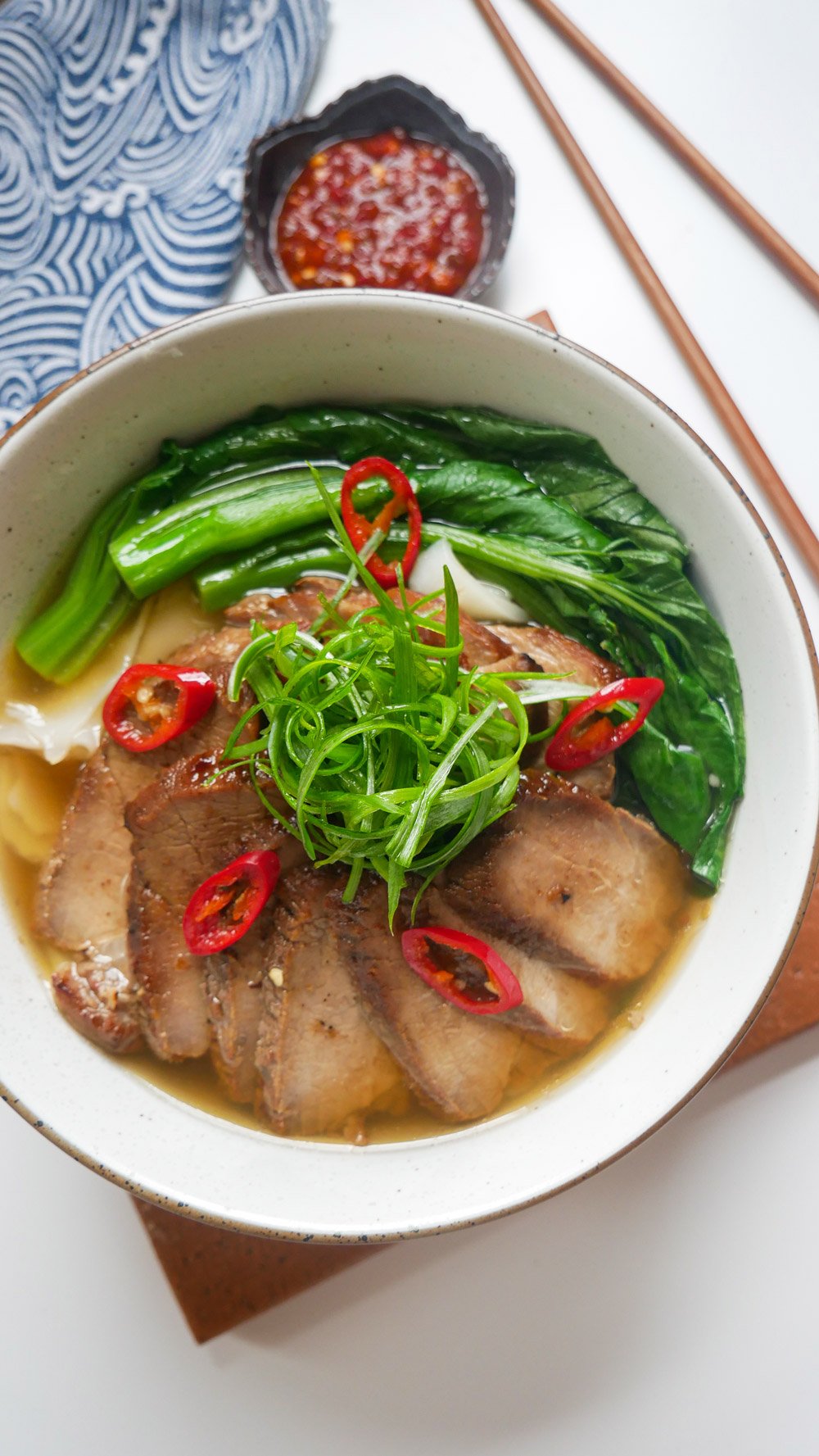
Char Siu Pork Noodle Soup Recipe (Ho Fun Noodles)
Ingredients
- 1 1/2 lb fresh wide rice noodles (hor fun) substitute with your choice of noodles
- 4-6 yu choy or your choice of vegetables
- sliced peppers optional for garnish
- scallions green part chopped for garnish
Soup
- 28 oz chicken stock two 14-oz cans
- 4 oz water
- 4 slices ginger about 1 inch knob
- 2 scallions white part only cut 1-inch
- 1/2 tsp sesame oil
- 1/4 tsp white pepper
- 1 tbsp neutral oil like avocado, grapeseed, canola, sunflower seed, or vegetable
Char Siu
- 1 1/2 lbs pork shoulder
- 4 tbsp char siu sauce Lee Kum Kee brand
- 1 tbsp dark soy sauce
- 1 1/2 tbsp Shaoxing wine
- 1 tbsp honey
- 6 garlic cloves grated
- 1 tsp Chinese five spice powder
- 1/8 tsp white pepper powder
- 1 fermented bean curd optional
- 1 tsp fermented bean curd brine optional
Honey Glaze
- 2 tbsp sauce marinade from above
- 2 tbsp honey
- 2 tsp water
Instructions
- Start by preparing the char siu marinade. In a small mixing bowl, combine Lee Kum Kee char siu sauce, dark soy sauce, Shaoxing wine, honey, grated garlic, Chinese five spice powder, white pepper powder, fermented bean curd, and fermented bean curd brine.
- Mix together well with a whisk, making sure to break up the fermented bean curd. Reserve 2 tablespoons of the marinade to be used as a honey glaze. Set the rest of the marinade aside for later.
- Prepare the pork by slicing them into 2 inch thick pieces. Using a fork, stab the pork on all sides. Transfer to a heavy duty Ziploc bag then pour the marinade over the pork. Close the Ziploc bag, making sure it's completely sealed.
- Massage the marinade into the pork then transfer to the fridge for at least 12 to 24 hours.
- To prepare the soup, heat a pot with neutral oil over medium heat. Once heated through, toss in the ginger slices and cook until fragrant, about 1 minute. Add the white part of the scallions then cook for an additional minute. Pour in the chicken stock and water, then bring to a boil.
- Once boiling, add sesame oil and white pepper. Taste the soup to see if it's to your liking. For example, if it's bland, add a pinch of salt. If it's too salty, add a splash of water. When you're happy with the taste of the soup, turn it off and set it aside.
- Preheat the air fryer to 400F (205C). While the air fryer is preheating, prepare the honey glaze. Take the reserved marinade and add honey and water. Mix until well combined.
- When the air fryer is ready to be used, arrange the marinated pork shoulder into the air fryer, making sure that there is enough space around each piece.
- Air fry for 3 minutes, then baste with the honey glaze. Flip and baste the other side. Cook for another 3 minutes. Repeat 2 more times. Cook for a total of about 12 to 14 minutes or until it reaches an internal temperature of 145F (63C). Depending on the thickness of your pork, you may need to cook it for another minute or so. I recommend using a meat thermometer to get an accurate temperature reading.
- Remove the char siu from the air fryer and let it rest for 10 minutes before cutting. Slice into 1/4 inch thick pieces or your desired thickness.
- Reheat the soup to a simmer. Next, prepare a pot of boiling water and set it over medium high heat. Blanch the yu choy or your choice of vegetables for 1 to 2 minutes. Remove then set aside. Bring the same pot of water to a boil again then cook the wide rice noodles for 1 minute or until softened. If using dried noodles, follow the package instructions to prepare the noodles. Drain the noodles well.
- To assemble the noodle bowl, place one serving of noodles in a bowl. Top with yu choy and the sliced char siu. Garnish with sliced peppers and the green part of the scallions. Ladle the soup over the noodles. Serve and enjoy!